
Essential Elements Every E-Commerce Website Needs for Success
Running an e-commerce website is more than just listing products—it’s a
Discover MoreWe Can Grow Your Business
When you write content for the web, you must consider two audiences: One, the spider-bots crawling the net for Google and Bing. Their continuous indexing affects your search engines ranking. Two, humans.
Spiders do not have much of a taste. They don’t care about beautiful words, whether your lines rhyme or whether the text is clever. Include pertinent words in both the header and the body of your writing (the always important SEO keywords), make sure you did not plagiarize anybody, and that you included a lot of text, and the crawlers will love your content. As long as it is readable, your content does not need to be a masterwork.
Your most important audience is not the spiders, though. Your most important audience is human readers. Humans have money. Spiders only have opinions. Humans have also taste. They like content written in an aesthetically pleasing way and, more important, content that is emotionally arousing. Interesting.


Good copywriting isn’t about writing with proper grammar. Good copywriting is about causing a reaction with your message that can be felt. Great copywriting captures the customer’s attention and provokes a response favorable to that which the message advocates.
Consider your specific case. You want to sell more. You could try boring your customers with a long list of your product and services virtues, how high quality they are, how much love you put in everything that you do. Then bore them a little bit more with a story full of self-praise about how you got to where you are. However, what your readers want to know from your content is not what your products and services can do but what they—your customers—can achieve when using your products and services. In other words, your copy should tell how your brand can transform your customers’ lives.
When attending to a message, whether content online, a book or a film, the first thing that the message receiver does is to assess the position advocated by the message. Is this important to my wellbeing or not? Does this message agree with what I believe in or does it propose something I entirely disagree with? To persuade, your message should lean toward agreeing to what your readers believe in and yet it must create at least some dissonance to arouse your readers’ curiosity. Content that completely agrees or that completely disagrees with what your audience believes in is likely to be disregarded. In the first case, because it does not bring anything new. In the second, because it is perceived as a threat to your audience’s concept of wellbeing.
In other words, the content copy must be relevant and favorable to your audience’s concept of self. If your audience lives in Orange County, you should write content about Orange County. For instance, Drive traffic Media has offices in Santa Monica and Irvine, and while the services we provide to our clients in Los Angeles and Orange County are basically the same, our audiences are not. Don’t ever confuse Newport Beach with Venice. Both cities face the ocean, both are in Southern California, both are expensive, but for Pete’s sake—they are not the same!
To know what your customer wants and care about you can do some market research, then develop a Buyer Persona, and a brand strategy. However, you can tailor your message only to so many people.
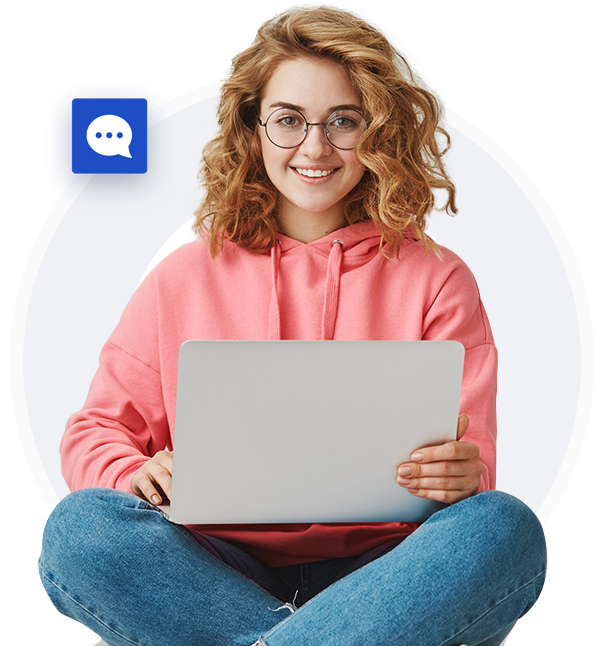


Running an e-commerce website is more than just listing products—it’s a
Discover More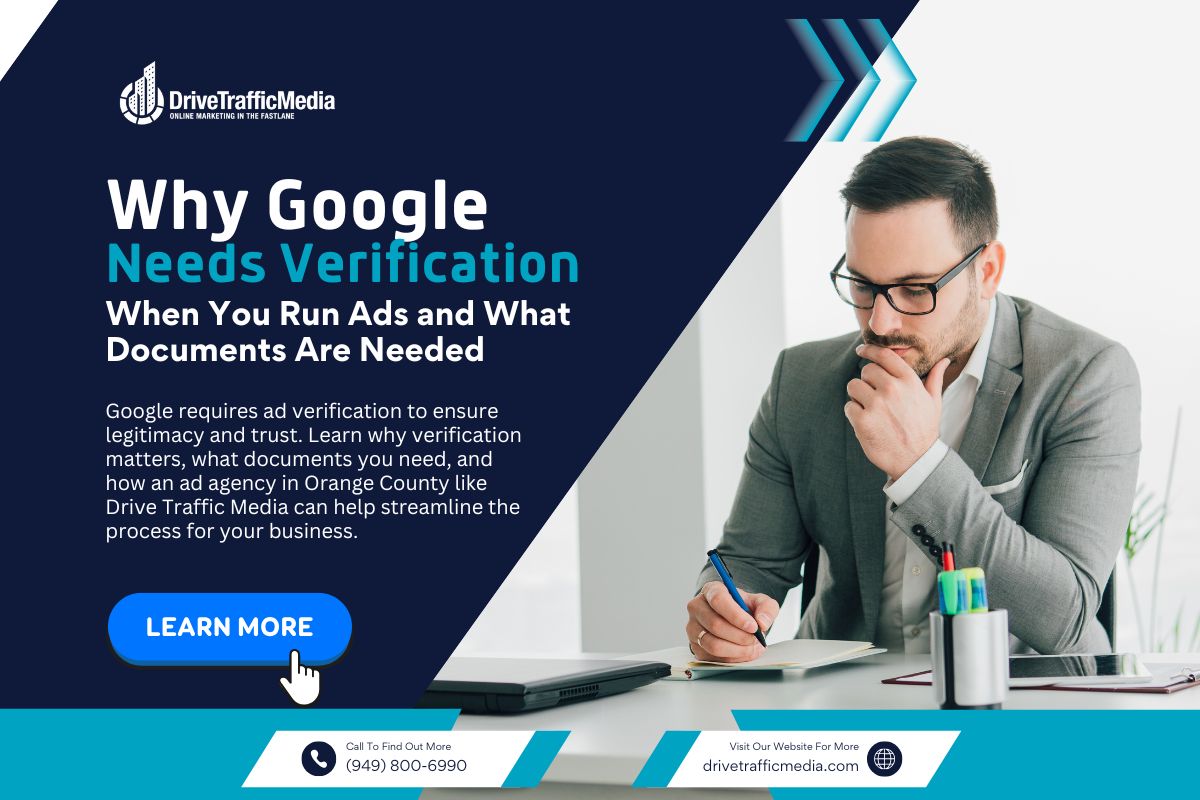
Running Google Ads is one of the most effective ways to increase brand visi
Discover More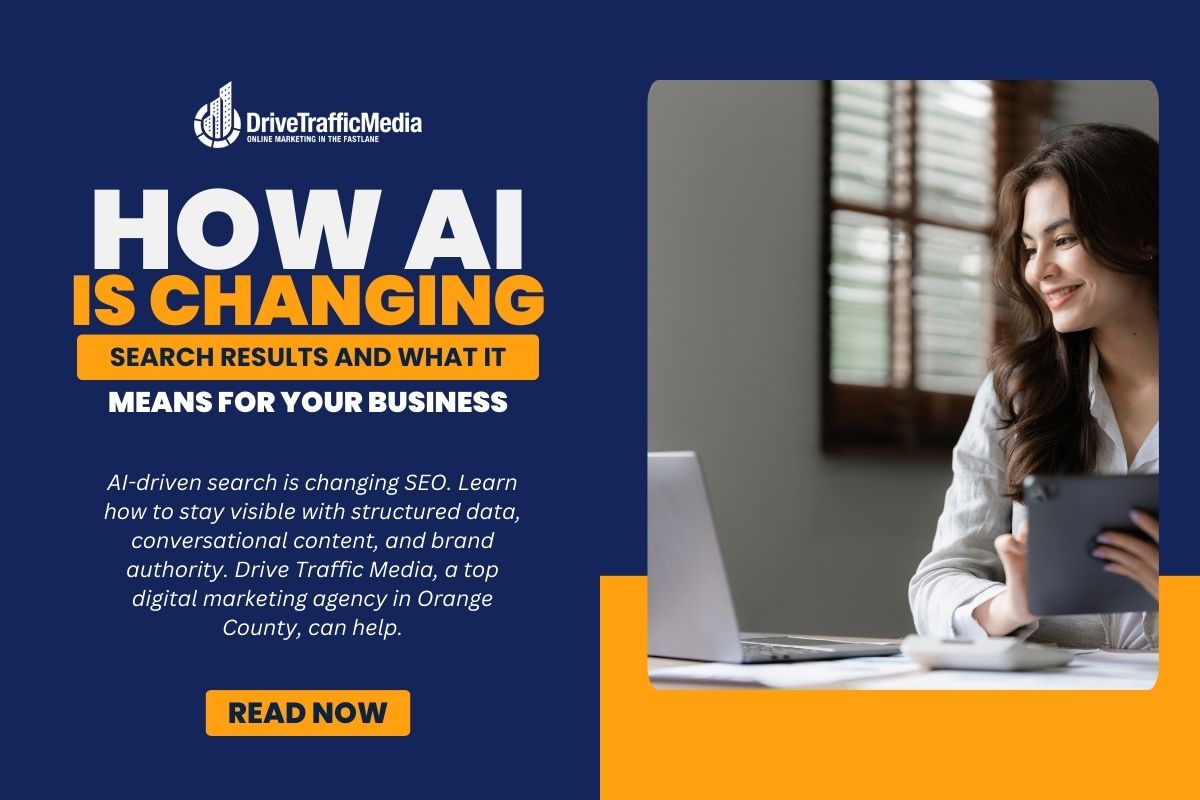
Artificial intelligence (AI) is transforming the way search engines deliver
Discover More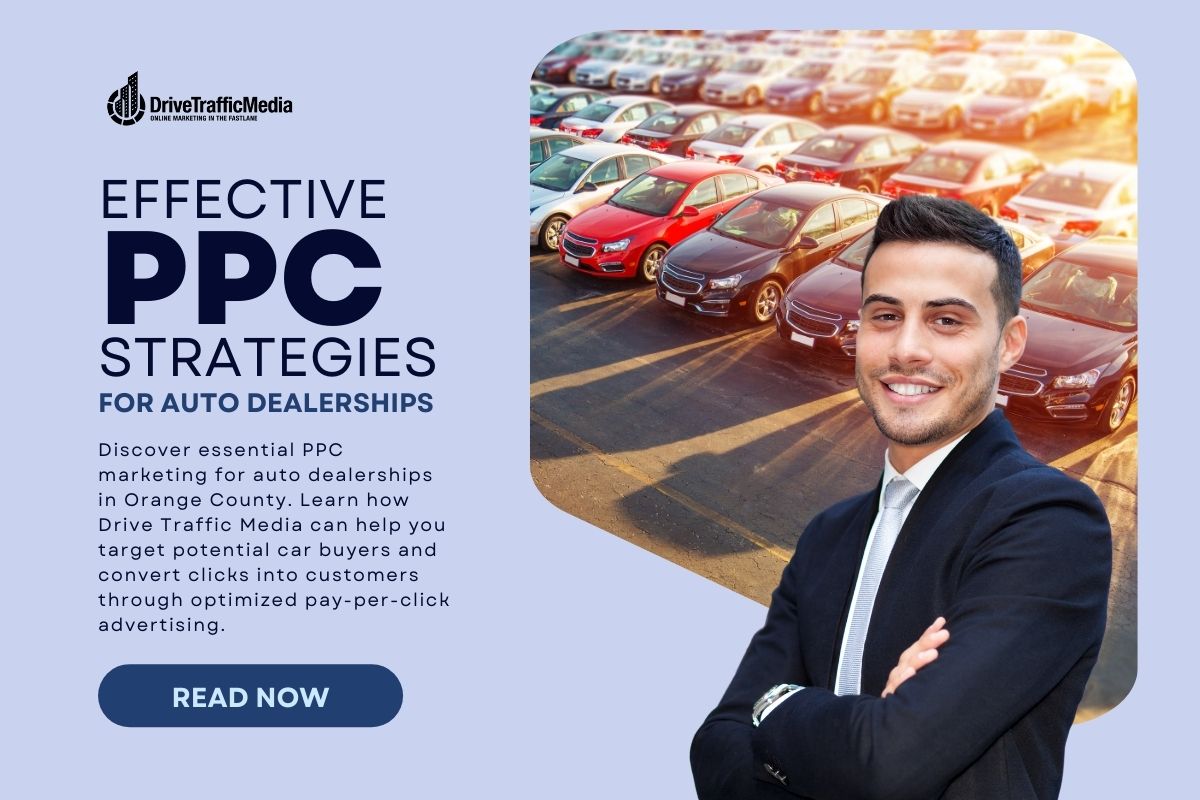
In the competitive world of auto sales, pay-per-click (PPC) advertising sta
Discover More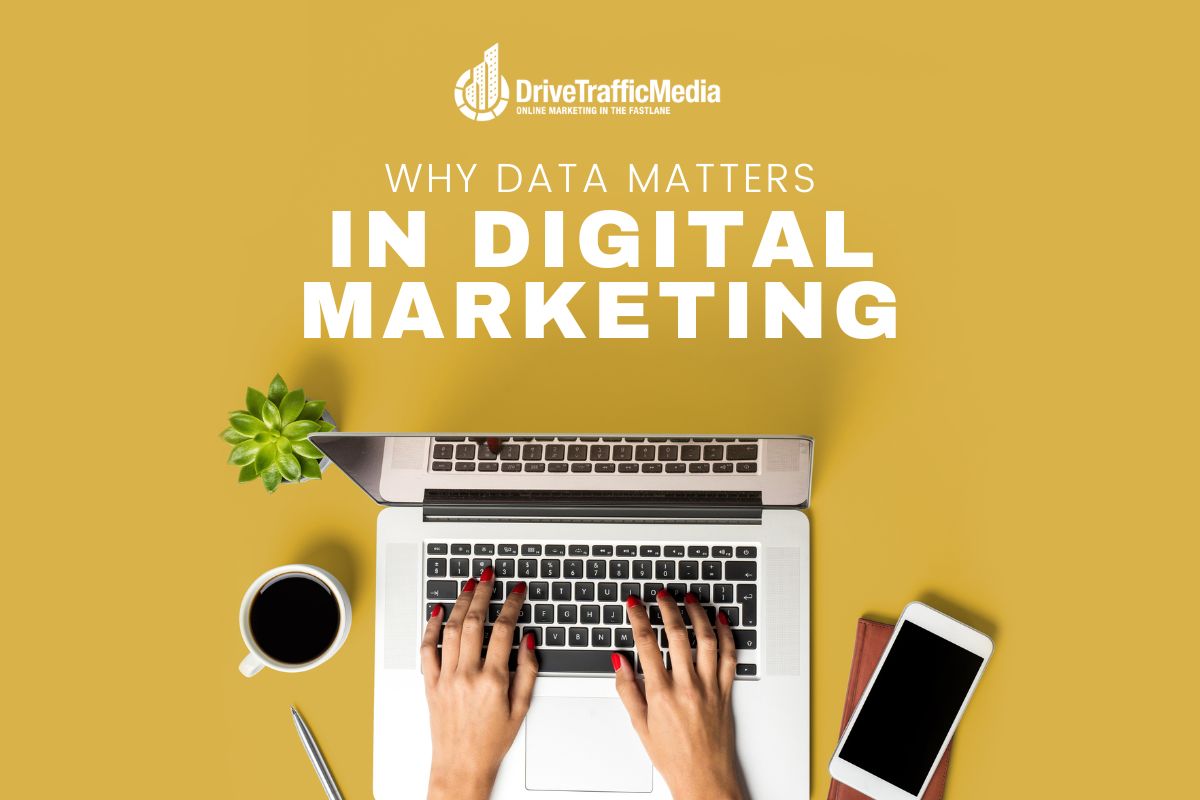
In today’s digital era, data has become indispensable for crafting su
Discover More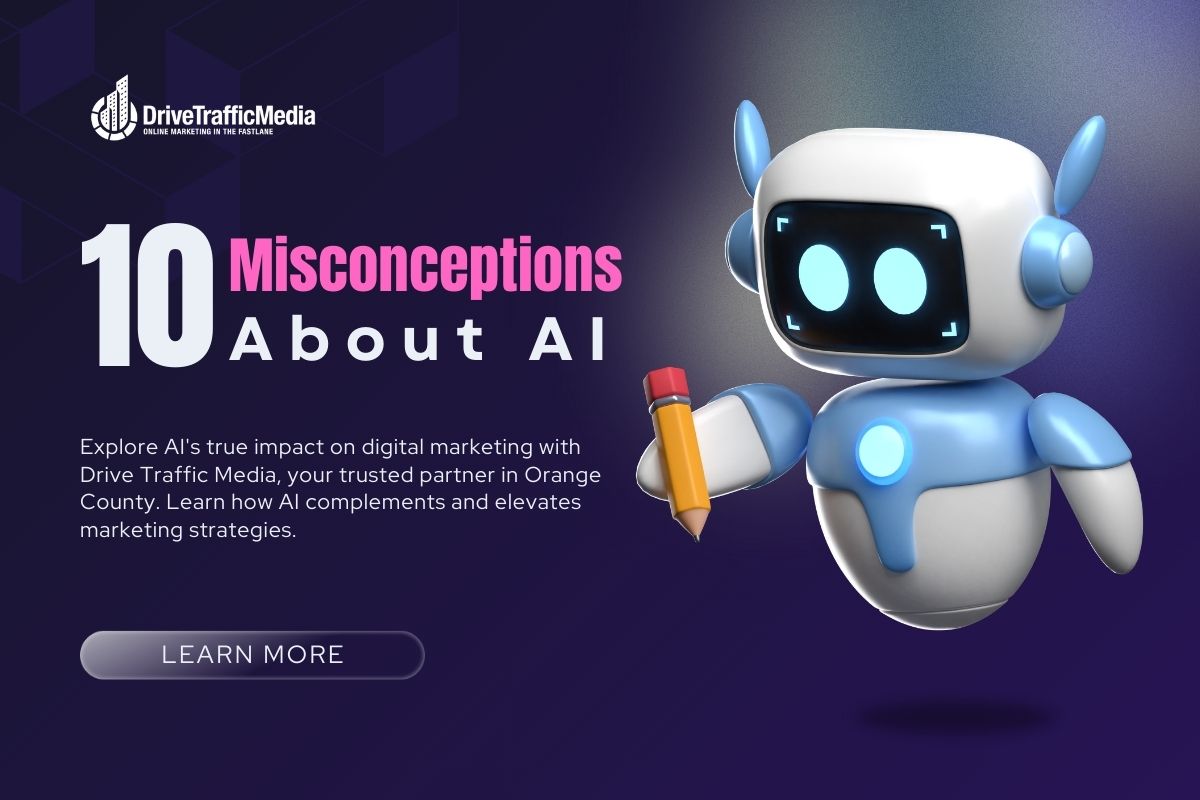
Artificial intelligence (AI) is reshaping digital marketing in Orange Count
Discover MoreDrive Traffic Media
We firmly believe that the internet should be available and accessible to anyone, and are committed to providing a website that is accessible to the widest possible audience, regardless of circumstance and ability.
To fulfill this, we aim to adhere as strictly as possible to the World Wide Web Consortium’s (W3C) Web Content Accessibility Guidelines 2.1 (WCAG 2.1) at the AA level. These guidelines explain how to make web content accessible to people with a wide array of disabilities. Complying with those guidelines helps us ensure that the website is accessible to all people: blind people, people with motor impairments, visual impairment, cognitive disabilities, and more.
This website utilizes various technologies that are meant to make it as accessible as possible at all times. We utilize an accessibility interface that allows persons with specific disabilities to adjust the website’s UI (user interface) and design it to their personal needs.
Additionally, the website utilizes an AI-based application that runs in the background and optimizes its accessibility level constantly. This application remediates the website’s HTML, adapts Its functionality and behavior for screen-readers used by the blind users, and for keyboard functions used by individuals with motor impairments.
If you’ve found a malfunction or have ideas for improvement, we’ll be happy to hear from you. You can reach out to the website’s operators by using the following email
Our website implements the ARIA attributes (Accessible Rich Internet Applications) technique, alongside various different behavioral changes, to ensure blind users visiting with screen-readers are able to read, comprehend, and enjoy the website’s functions. As soon as a user with a screen-reader enters your site, they immediately receive a prompt to enter the Screen-Reader Profile so they can browse and operate your site effectively. Here’s how our website covers some of the most important screen-reader requirements, alongside console screenshots of code examples:
Screen-reader optimization: we run a background process that learns the website’s components from top to bottom, to ensure ongoing compliance even when updating the website. In this process, we provide screen-readers with meaningful data using the ARIA set of attributes. For example, we provide accurate form labels; descriptions for actionable icons (social media icons, search icons, cart icons, etc.); validation guidance for form inputs; element roles such as buttons, menus, modal dialogues (popups), and others. Additionally, the background process scans all the website’s images and provides an accurate and meaningful image-object-recognition-based description as an ALT (alternate text) tag for images that are not described. It will also extract texts that are embedded within the image, using an OCR (optical character recognition) technology. To turn on screen-reader adjustments at any time, users need only to press the Alt+1 keyboard combination. Screen-reader users also get automatic announcements to turn the Screen-reader mode on as soon as they enter the website.
These adjustments are compatible with all popular screen readers, including JAWS and NVDA.
Keyboard navigation optimization: The background process also adjusts the website’s HTML, and adds various behaviors using JavaScript code to make the website operable by the keyboard. This includes the ability to navigate the website using the Tab and Shift+Tab keys, operate dropdowns with the arrow keys, close them with Esc, trigger buttons and links using the Enter key, navigate between radio and checkbox elements using the arrow keys, and fill them in with the Spacebar or Enter key.Additionally, keyboard users will find quick-navigation and content-skip menus, available at any time by clicking Alt+1, or as the first elements of the site while navigating with the keyboard. The background process also handles triggered popups by moving the keyboard focus towards them as soon as they appear, and not allow the focus drift outside it.
Users can also use shortcuts such as “M” (menus), “H” (headings), “F” (forms), “B” (buttons), and “G” (graphics) to jump to specific elements.
We aim to support the widest array of browsers and assistive technologies as possible, so our users can choose the best fitting tools for them, with as few limitations as possible. Therefore, we have worked very hard to be able to support all major systems that comprise over 95% of the user market share including Google Chrome, Mozilla Firefox, Apple Safari, Opera and Microsoft Edge, JAWS and NVDA (screen readers).
Despite our very best efforts to allow anybody to adjust the website to their needs. There may still be pages or sections that are not fully accessible, are in the process of becoming accessible, or are lacking an adequate technological solution to make them accessible. Still, we are continually improving our accessibility, adding, updating and improving its options and features, and developing and adopting new technologies. All this is meant to reach the optimal level of accessibility, following technological advancements. For any assistance, please reach out to